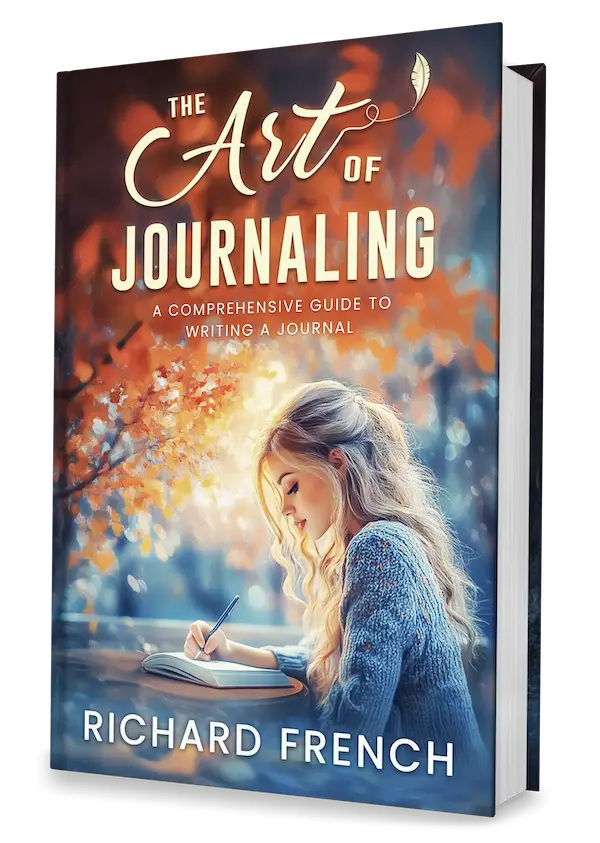Therapeutic Benefits of Journaling
Journaling is like a secret weapon for keeping our emotions in check. Especially when you throw in some CBT journaling techniques, it’s like therapy without the couch.
Journaling for Emotional Wellness
Putting thoughts on paper regularly does wonders for emotional health. It’s not just a hobby; it’s like having a chat with a non-judgmental friend who helps sort through the mess inside your head (PsychCentral).
In 2020, a bunch of moms with kids who had emotional or behavioral issues felt a major mood lift. Writing three times a week for six weeks left them feeling more optimistic and thankful (PsychCentral). Turns out, this little habit can make a big difference.
| Study Year | Participant Group | Frequency | Duration | Outcome |
|---|---|---|---|---|
| 2020 | Moms with kids having emotional/behavioral issues | 3 times/week | 6 weeks | More optimism and gratitude |
Journaling prompts are like a roadmap for your mind. They give you themes to dive into, helping you explore emotions, relationships, and even what makes you, you (PsychCentral). They make self-discovery less daunting and more structured.
For more on how it helps and some nifty techniques, check out our piece on therapeutic writing benefits.
Enhancing Resilience through Writing
Journaling isn’t just about emotions; it’s also great for building resilience. A study in 2018 showed that jotting down the good stuff for 15 minutes a day, three times a week, reduced anxiety and stress while making people tougher (PsychCentral).
| Study Year | Writing Topic | Frequency | Duration | Outcome |
|---|---|---|---|---|
| 2018 | Positive experiences | 3 times/week | 15 min/day | Less anxiety/stress and boosted resilience |
Resilience is like your personal armor for tough times. Mixing it up with techniques like CBT journaling helps kick negativity to the curb, leading to healthier coping strategies.
New to journaling or wanting to spice up your routine? Articles on effective journal prompts, mindful journaling exercises, and morning pages journaling are your go-to guides.
Trying out trauma journal prompts can help with deep emotional healing, blending therapeutic writing into daily life seamlessly. For detailed instructions, check out our guide on healing journals.
Introduction to Cognitive Behavioral Therapy (CBT)
Cognitive Behavioral Therapy (CBT) is a popular form of talk therapy that’s all about helping folks identify and shake off those pesky negative thoughts. Once you get the hang of it, you can dive into some CBT journaling to give anxiety and stress the old heave-ho.
Understanding CBT Principles
CBT runs on the idea that our thoughts, feelings, and actions are in a constant dance. When you start noticing those negative thoughts and flip ’em on their head, you’re opening the door to better habits and less cranky feelings. CBT’s got a great track record for tackling issues like depression, PTSD, and eating disorders, as the fine folks over at Mayo Clinic point out.
It’s typically a faster kind of therapy, lasting from about five to 20 sessions, depending on what each person needs, how tough their symptoms are, and other things like how ready they are to dive in. It doesn’t promise to wave a magic wand and cure everything, but it sure does equip you with tools to handle life’s curveballs better, giving you a boost in self-esteem and life satisfaction.
Utilizing CBT Techniques
CBT journaling is packed with handy tricks to slide into your daily life:
- Thought Recording: Jot down those nagging thoughts when they pop into your head. By keeping track, you’ll start to spot patterns and figure out what sets them off.
- Identifying Cognitive Distortions: Ever catch yourself blowing things out of proportion or leaping to worst-case scenarios? These are cognitive distortions, and they can crank up your anxiety and stress. Noticing these means you’re halfway to tackling them.
- Challenging Negative Thoughts: Got those negative vibes recorded? Time to play detective. Pick apart the evidence for and against these thoughts and try on some new viewpoints for size.
- Monitoring Behavioral Patterns: Check out how your thoughts steer your actions by keeping an eye on your behavior. This’ll help you figure out the link between brain chatter and what you do.
- Setting Behavioral Goals: Make sure your goals are ticking all the boxes—specific, measurable, doable, relevant, and on a timeline. Scribbling these goals down makes you see progress and keeps you on track.
- Emotional Processing and Self-Reflection: Pouring your emotions onto paper can help you understand them better and become more in tune with your feelings. Over time, it builds up your emotional smarts and toughens you up to handle life’s punches.
Bringing these CBT tactics into your journaling habit can seriously clean up your thinking and stress-busting game. If you want even more ideas to jumpstart your journaling, check out our guides on self discovery journal prompts and mindful journaling exercises.
CBT journaling isn’t a one-size-fits-all deal—it’s flexible enough to fit your personal style and needs. Used alongside regular therapy, it can supercharge your healing journey. For a crash course on getting your journaling wheels turning, take a peek at healing journal setup.
Cognitive Behavioral Therapy (CBT) Journaling Techniques
CBT journaling combines classic therapy methods with age-old journal scribbling. It’s all about spotting and changing those pesky negative thoughts and habits that can really put a damper on your day. You could say it’s a brain workout. Key moves here include recording what goes on in your noggin, pushing back on not-so-cheery thoughts, and setting some solid action steps.
Thought Recording and Monitoring
One of the basics of CBT journaling is keeping track of thoughts and feelings like a mental scrapbook. It’s about jotting down your everyday headspace and looking out for mental hiccups. This helps you see the self-critical patterns that just sneak up on you without you noticing.
| Thought Log Example | |
|---|---|
| Situation | Stressful encounter |
| Thought | “I can’t handle this.” |
| Emotion | Freaked out, Tense |
| Cognitive Distortion Identified | Making a mountain out of a molehill |
Keeping this kind of a diary lets you spot patterns and triggers, but with a bit more grunt, like noting down what was happening, your feels, and the thought train you hopped on. Catching on to this stuff is a foot in the right direction for sorting out worry and tension.
Get more tips on tracking your thoughts over at our emotional processing journaling section.
Challenging Negative Thought Patterns
Once you’ve eyeballed your brain’s hiccups, it’s time to throw them down a peg. This practice, called cognitive restructuring (fancy name, huh?), has you check those nasty thoughts and come up with better, more optimistic ideas.
| Cognitive Restructuring Example | |
|---|---|
| Negative Thought | “I’m gonna bomb this task.” |
| Evidence For | “I messed up last time.” |
| Evidence Against | “I’ve pulled off lots before.” |
| Balanced Thought | “Slip-ups happen, but I’ve aced things, too.” |
When you write down the nasty thought, the dumb arguments for it, the solid arguments against it, and a more reasonable thought, you’re better at taking the wind out of those downer thoughts and bounce back emotionally.
Dive into more thought-flipping tricks over at shadow work journaling.
Setting Behavioral Goals
This last trick in CBT journaling is about cooking up and tracking ways to be a better human. It’s about marking out real, bite-sized goals to make good habits stick and kick stress to the curb.
| Goal Setting Example | |
|---|---|
| Goal | Chill out more daily |
| Specific Action | Breathe deep for 10 minutes every morning |
| Measurable | Count how often and long you do it |
| Time-bound | Do it for 2 weeks and see how your nerves feel |
Having these goals gives you a blueprint for keeping cool. Check in on how you’re doing and tweak things or add fresh goals to keep moving ahead.
For the lowdown on setting killer goals, check out boundary setting journal.
These CBT journaling tactics can be a total game-changer for those trying to mellow out their mental noise. They give structure to managing the emotional rollercoaster. Use them with classical CBT or roll solo, your choice. Peek through more journal goodies with self discovery journal prompts and therapeutic writing benefits.
Benefits of CBT Journaling
Cognitive Behavioral Therapy (CBT) journaling is like a Swiss army knife for folks dealing with anxiety and stress. This nifty little trick helps sort out those swirling emotions, gives confidence a boost, and makes handling feelings a bit easier.
Managing Anxiety and Stress
Ever feel like your brain’s a crowded party? CBT journaling gives you a VIP pass to sort out the chaos. By scribbling down thoughts that you’re not quite ready to say out loud, many folks have seen their mood get a serious upgrade and have even dodged a trip or two to the doc’s office. Get in the habit of jotting things down; it’s a bit like planting your feet firm in a storm (Positive Psychology).
Writing is kinda like detective work for your head—find where those negative thoughts hang out and what sets them off. Tackling these through writing can be a solid way of looking after yourself and squashing anxiety into something more manageable.
| Benefit | What It Does |
|---|---|
| Mood Booster | Brightens your mood and kicks depressive vibes to the curb |
| Health Perks | Cuts down on those “I should see a doctor” moments |
| Think Sharper | Reflecting this way tunes up your thinking gears |
Want the scoop on how scribbling can feel therapeutic? Head over to our page on therapeutic writing benefits.
Improving Self-Esteem
CBT journaling has another trick up its sleeve for pumping up your self-esteem. Writing down the good stuff and celebrating your wins builds up your confidence big time. Regular jotting helps you kick those pesky self-doubts to the curb and trade them for stronger, more positive thoughts (Charlie Health).
Doodling about your daily wins and jotting thankful notes are stellar ways to boost your self-worth. Using bits of motivation can dig deep into what you value, your connections, and who you are, giving you sunnier thoughts about yourself (PsychCentral).
Enhancing Emotional Processing
Journaling is like a comfy chat with a friend for your feelings. It gives your emotions room to breathe, letting you unpack and get clear on how you feel. Structured prompts can guide you through the maze of feelings, relationships, and sticky situations (Positive Psychology).
Doing this regularly helps you spot patterns and triggers, letting you deal with them smoother. This little habit boosts emotional smarts and self-awareness in a big way.
Hungry for more on how writing can sort out your feelings? Check out our section on emotional processing journaling.
CBT journaling is a game-changer for self-growth, unlocking loads of mental perks. Toss these scribbling tricks into your routine for a trip towards better stress handling, a confidence boost, and richer emotional insight.
Curious to delve deeper? Peek at our articles on trauma journal prompts, healing journal setup, and mindful journaling exercises.
Incorporating Journal Prompts for Self-Reflection
Getting worked up is just part of life. But when the stress creeps in like a nosy cat, you’ve got to show it the door. That’s where CBT journaling techniques come in handy. Toss a few journal prompts into your daily grind, and voila! You’ve got yourself a nifty way to sort through those muddled emotions and rogue thoughts. With the right scribbles, you can tackle anxiety, knock back a bit of the blues, and handle those mental bumps in the road a lot smoother.
Structured Self-Exploration
Structured self-exploration is all about taking a closer gander at what’s floating around in your noggin. By using specific prompts, you can peek into your emotions, values, and just what makes you tick. Make a habit of it, and you’re sure to start seeing things a bit clearer, and maybe even feel a bit tougher for it. According to PsychCentral, sticking with these prompts can lead you on a path to discover bits of yourself that might just surprise you.
Try kicking things off with these thought-provoking questions:
- “What are three traits you like most about yourself?”
- “Think back to a recent obstacle you faced. How’d you tackle it?”
- “Write down five things that you’re thankful for.”
Check out this little chart that shows some possible perks of jotting down your thoughts:
| Prompt Question | Potential Benefit |
|---|---|
| “What are three traits you like most about yourself?” | Gives your self-esteem a lift |
| “Think back to a recent obstacle you faced. How’d you tackle it?” | Sharpens your problem-solving chops |
| “Write down five things that you’re thankful for.” | Makes gratitude your new best buddy |
Bringing these prompts into your routine isn’t just a brain exercise—it’s like connecting the dots between therapy and everyday life. This practice can offer insights into how you think and why. In turn, it can help you tweak mental habits and manage emotions (Positive Psychology). For more on self-discovery journal prompts, take a stroll through our curated links.
Building Emotional Awareness
Being in tune with your emotions is a game changer, especially when anxiety has you all twisted up. A well-placed journal prompt can amplify your understanding of what’s going on inside, aligning nicely with the principles of Cognitive Behavioral Therapy—that’s all about noticing and shaking up those pesky negative thoughts (Mayo Clinic).
Consider these prompts to get into the emotional nitty-gritty:
- “What are you feeling at this moment? Give your emotions a full-on description.”
- “What’s sparking these feelings?”
- “What’s a good way to handle these emotions?”
Here’s a handy table to show what these prompts can do for you:
| Prompt Question | Function |
|---|---|
| “What are you feeling at this moment? Give your emotions a full-on description.” | Pinpoints emotions |
| “What’s sparking these feelings?” | Spots what sets them off |
| “What’s a good way to handle these emotions?” | Crafts coping plans |
Regularly jotting down answers helps to build up your emotional vocabulary and get better at understanding what pushes your buttons. Doing this every now and then can grow your self-awareness and emotional smarts (PsychCentral).
If you’re feeling artsy, try art therapy journaling for a creative twist on emotion handling. Journaling can be quite the Swiss army knife in your mental wellness kit—tailored prompts make it even more potent. For a deeper dive into using CBT journaling for emotional processing, have a look-see at our guides on structured journaling techniques.
Practical Application of CBT Journaling
Tracking Progress in Therapy
If you’re in the thick of Cognitive Behavioral Therapy (CBT), journaling might just be your trusty sidekick. Jotting down your thoughts, feelings, and actions helps you see what’s changing, spot patterns in your anxiety or stress, and better understand how therapy is working for you.
Therapists often nudge folks to keep a journal about stress or anxiety events, noting the who-what-where-why of it all. By doing this, you end up with a clear picture of your emotional reactions and any tricks you used to cope. This info helps your therapist tweak their approach to suit you best.
| What to Note | What’s Included | How Often |
|---|---|---|
| Triggers | Events, Situations | Daily |
| Emotional Responses | Feelings, Intensity | Daily |
| Coping Mechanisms | Techniques Used | Daily |
| Thoughts | Cognitive Patterns | Weekly |
Check out more tips in our article about therapeutic writing benefits.
Trauma Recovery Techniques
CBT journaling can be a lifesaver for those healing from trauma, too. Getting your thoughts on paper helps process those tough experiences, giving you a chance to understand your mind and heart a bit better. Writing about trauma helps make sense of emotions and thoughts swirling around.
Writing down past events can help you get some distance from them — like taking a mental step back — and this trick is used in stuff like Acceptance and Commitment Therapy (ACT) too. That step back can dial down the emotional hit of those memories.
| Technique | What It’s For | How Often |
|---|---|---|
| Expressive Writing | Process Trauma | When Needed |
| Cognitive Restructuring | Tweak Thought Patterns | Weekly |
| Affirmations | Positive Feedback | Daily |
Need a hand with where to start? Visit our piece on trauma journal prompts.
Personal Growth Strategies
CBT journaling isn’t just a tool for stress or trauma; it’s ace for personal growth. Writing about your goals helps you track where you’re headed, notice any stumbling blocks, and keep the fire stoked for reaching them. It’s a way to nail down what really matters to you and aim your actions towards those big-picture dreams.
Growth journaling can fit in spots for things like gratitude, progress on goals, and reflecting on how your day went. This stuff ramps up self-awareness and encourages you to take charge of your development.
| What to Track | What’s Included | How Often |
|---|---|---|
| Goals | Long-term, Short-term | Monthly |
| Daily Thoughts | Actions, Feelings | Daily |
| Gratitude | Wins, Good Stuff | Daily |
Want more guidance? Head over to our piece on self discovery journal prompts.
Adding CBT journaling into the mix isn’t just about keeping anxiety in check; it’s about building up your emotional strength and pushing your personal growth. For deeper looks into therapeutic journaling, check out therapeutic writing blocks and boundary setting journals.







